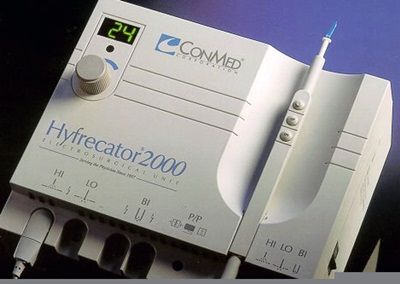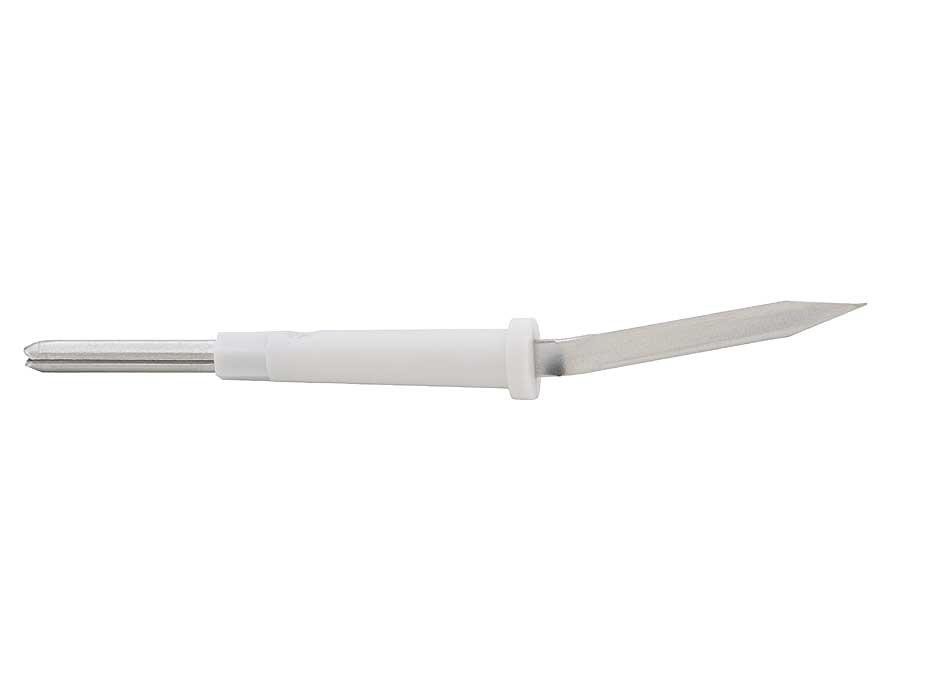
 |
Upload | Sign in |
|---|
Hyfrecators are a type of medical equipment used in the process of electrosurgery. The hyfrecator functions by sending electrical impulses into the body with the use of a probe.
It works by emitting low-power high-frequency AC (alternating current) electrical pulses via a probe, directly to the affected area of the body. The amount of output power needed is adjustable, and the device is equipped with different tips, electrodes and forceps depending on the electrosurgical requirement.
The hyfrecator differs from other electrosurgical devices primarily in being low powered and not intended for cutting tissue, or for use in other than conscious patients. The reason is that the hyfrecator does not need to use a ground pad, and thus either passes a very low-powered current between forceps tips, or else between a single probe and the patient, with only the patient's self-capacitance providing a current sink (this is equivalent to considering displacement current to be the return current).
Modes of Operation:
There are 2 principal modes in which a hyfrecator will function.
The first is known as desiccation. With this approach, the tip of the probe is used to heat the skin in a small area to a temperature that is too high for the tissue to tolerate. As a result, the tissue dies. This approach is ideal for tasks like wart removal.
The second mode for hyfrecator operation is called fulguration. Here, the function of the probe tip is not just to heat the surrounding skin, but also to kill skin conditions using a small surge or spark of energy.
This technique is often employed with closing lesions in the surface of the skin, as it causes the carbonization of the tissue almost immediately.
Hyfrecator tips make it possible for the surgeon to be very exact when it comes to addressing tissue that needs to be removed or cauterized. Some designs for this medical tool include two probes, making it possible to generate a low grade current that passes between the tips situated on each probe. Other designs call for a single probe tip that can be used to seal open wounds or to burn off some types of skin cancer.


APPLICATIONS:
The hyfrecator has a large number of uses, such as removal of warts, pearly penile papules, desiccation of sebaceous gland disorders, electrocautery of bleeding, epilation, destruction of small cosmetically unwanted superficial veins, in certain types of plastic surgery and many other dermatological tasks. It is also instrumental in the destruction of skin cancers such as basal cell carcinoma.